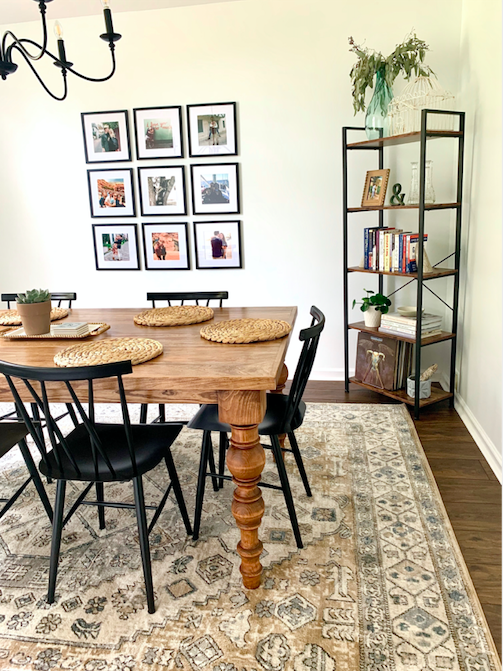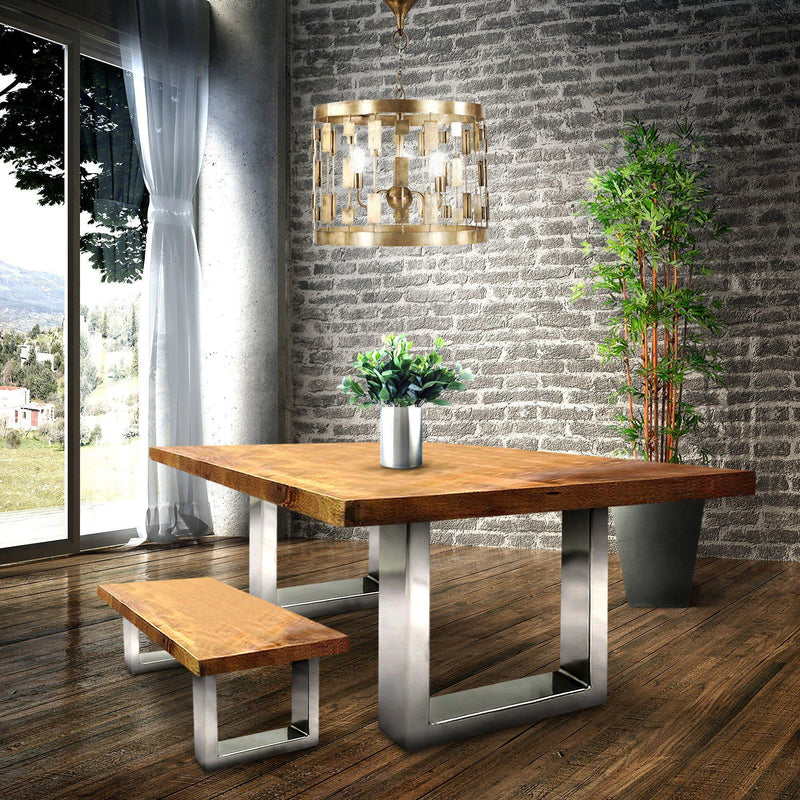From Traditional to Modern: Locate the Suitable Dining-room Table Legs for Your Style
While classic styles such as cabriole and transformed legs stimulate a sense of ageless class, modern styles like hairpin and geometric choices provide a possibility for striking aesthetic interest. As you think about these components, the inquiry continues to be: how can you perfectly integrate these varied leg designs to develop an unified eating experience?
Recognizing Table Leg Styles
The selection of eating area table leg designs can dramatically affect both the aesthetics and functionality of the room. Each leg design adds special aesthetic aspects and useful features, dealing with diverse style choices and usage demands. Comprehending these styles is vital for choosing the best dining table that aligns with your total interior decoration vision.
For example, conical legs supply a tidy, classic appearance that can boost a space's elegance, while stand bases supply stability and take full advantage of legroom, making them optimal for smaller rooms. Hairpin legs, a hallmark of mid-century modern-day style, introduce a commercial flair, permitting a ventilated, open feel. Trestle legs evoke rustic beauty, offering durable support and a feeling of timelessness.
Wood legs can bring warmth and texture, whereas steel alternatives typically share a sleek, contemporary vibe. Eventually, recognizing table leg styles is vital for developing a natural dining area that shows individual design while making certain practicality and comfort.
Standard Table Leg Options
When choosing dining-room table legs, traditional options typically personify classic beauty and workmanship. These layouts mirror an abundant heritage and a dedication to top quality, making them ideal for those who appreciate classic appearances.
Among one of the most legendary typical leg designs is the cabriole leg, identified by its elegant bent form. This layout usually includes ornamental makings and is most frequently located in Queen Anne and Chippendale furnishings. One more prominent choice is the turned leg, which boasts a collection of smooth, rounded forms that supply a traditional look while maintaining stability.
Furthermore, the straight leg, while straightforward, supplies a tough and basic structure that can mix flawlessly with a range of tabletop styles. For those drawn to ornate describing, claw-and-ball feet legs stimulate a sense of grandeur and can act as a spectacular focal factor in any dining area.
Last but not least, pedestal bases, although not strictly legs, give a different typical choice that enables ample legroom and can be perfectly sculpted. Each of these conventional leg designs adds to the overall setting of a dining area, weding function with visual appeal.

Modern Table Leg Layouts
Modern table leg designs supply a diverse series of styles that highlight clean lines and ingenious materials. These styles frequently focus on capability while functioning as striking prime focus within a dining area. Minimal visual appeals prevail, with legs crafted from materials such as steel, glass, and crafted wood, which add to a airy and modern feeling.
One popular style is the barrette leg, identified by its slender, tapered framework that provides stability without frustrating the table top (dining room table legs). This design is typically located in mid-century modern furniture and can effortlessly match numerous table shapes. One more fad is making use of geometric shapes, where legs may handle unbalanced or angular forms, adding aesthetic interest and a touch of virtuosity

Blending Designs for Special Areas
Typically, property owners seek to create one-of-a-kind eating areas that reflect their individual design by blending numerous layout aspects. This approach permits for the unification of diverse visual appeals, resulting in an unified yet unique setting. For circumstances, combining a rustic wooden table with streamlined, contemporary metal legs can develop a distinctive contrast that elevates the space's overall allure.
Additionally, incorporating vintage table legs with contemporary table tops can stimulate a sense of background while preserving a modern-day sensibility. Such mixes not only display specific taste yet also urge creativity, enabling homeowners to curate an area that really feels both personal and welcoming.
Color plays a critical function in this mixing procedure; selecting table legs that enhance or contrast with the existing color system can enhance visual passion. For example, whitewashed legs can soften the boldness of a dark table surface area, developing a balanced aesthetic.
Tips for Selecting the Right Legs
Choosing the right table legs is vital for accomplishing both capability and aesthetic appeal in your eating area. Begin by taking into consideration the overall style of your space. Standard setups profit from legs that feature elaborate carvings or turned styles, while modern rooms might ask for sleek, minimalist styles.
Next, evaluate the height and stability of the legs. dining room table legs. Common eating tables vary in between 28 to 30 inches in elevation, so make certain the legs enhance this dimension for convenience. In addition, durable products, such as wood or steel, can boost security and durability
Examine the leg form also-- choices consist of directly, tapered, or pedestal styles. Straight legs provide a classic look, while tapered legs can add a touch of elegance. Pedestal bases provide ample legroom and are ideal for smaller sized rooms.
Verdict
In recap, choosing the optimal dining room table legs requires careful consideration of both standard and modern-day styles. Typical alternatives such as cabriole and transformed legs provide timeless elegance, while modern-day layouts like hairpin and geometric shapes give a modern touch. By balancing leg style, elevation, and material with the overall décor, a cohesive and welcoming environment can be achieved. Ultimately, the picked table legs must reflect the wanted visual, enhancing the eating experience within the area.
The variety of eating room table leg designs her explanation can considerably affect both the looks and functionality of the area. Ultimately, comprehending table leg designs is vital for creating a cohesive eating area that mirrors individual style while making sure usefulness and comfort.One of the most famous traditional leg styles is the cabriole leg, identified by its graceful rounded form. Straight legs offer a traditional appearance, while conical legs can add a touch of sophistication.In recap, selecting the optimal eating room table legs click this requires cautious factor to consider of both traditional and contemporary styles.